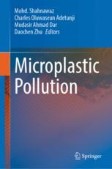Search
Search Results
-
Impact of sanitizer solutions on microbial reduction and quality of fresh-cut pennywort (Centella asiatica) leaves
Fresh pennywort ( Centella asiatica) is usually eaten raw as ‘ulam’ or salad-like lettuce. Unfortunately, the fresh pennywort has the potential to...

-
Macroscopic mixer for disparate property liquid–liquid mixing in aqueous sanitizer preparation
The present study introduces an active macroscopic mixing device for aqueous sanitizer preparation. It operates on a piezoelectrically actuated...

-
Copper-zinc nanoparticle-decorated nitrogen-doped carbon composite for electrochemical determination of triclosan
A new sensor based on copper-zinc bimetal embedded and nitrogen-doped carbon-based composites (CuZn@NC) was prepared for triclosan (TCS) detection by...

-
Through-container quantitative analysis of hand sanitizers using spatially offset Raman spectroscopy
The COVID-19 pandemic created an increased demand for hygiene supplies such as hand sanitizers. In response, a large number of new domestic or...

-
Combination of Electrolyzed Water and Other Measures for Food Decontamination: Methods and Procedures
Food safety is a burning issue in the present world. Safe sanitizers are obligatory for maintaining quality of food and increasing the shelf life of...
-
Transcriptomic response of Campylobacter jejuni following exposure to acidified sodium chlorite
Chemical decontamination during processing is used in many countries to mitigate the Campylobacter load on chicken meat. Chlorine is a commonly used...

-
Evaluation of calcium hydroxide, calcium hypochlorite, peracetic acid, and potassium bicarbonate as citrus fruit sanitizers
Xanthomonas citri ( X . citri ) is a quarentenary plant pathogen and the causal agent of the citrus canker. X . citri forms biofilms and remains fixed on...

-
Microalgae-Based Disinfectant Formulation for Aseptic Processing of Ethiopian Ingredient-Sourced Functional Bread and Its Molecular Docking Analysis to Reduce Hypernatremia
The global prevalence of food-borne infections has become a major concern. Food-borne pathogens like Campylobacter jejuni, Salmonella enterica, and Clo...

-
Developments and Advances of High Intensity Pulsed Light and its Combination with Other Treatments for Microbial Inactivation in Food Products
High-intensity pulsed light (HIPL) technology is increasingly utilized to disinfect foods by inactivating microorganisms. Short-duration,...

-
A Review of Challenges and Solutions of Biofilm Formation of Escherichia coli: Conventional and Novel Methods of Prevention and Control
E. coli is a virulent and opportunistic pathogen with the ability of antibiotic-resistant. In general, E. coli can form the biofilm on food,...

-
Advancing ethanol content determination in hydrogels: non-destructive and operational methods for health and criminal inspections
The significance of accurate determination of ethanol content in hydrogel formulations was accentuated during COVID-19 pandemic coinciding with the...

-
Cetylpyridinium chloride produces increased zeta-potential on Salmonella Typhimurium cells, a mechanism of the pathogen’s inactivation
Cetylpyridinium chloride (CPC) is a quaternary ammonium sanitizer approved for fresh poultry animal carcass sanitization from microbial human...

-
Application of chitosan-ZnO nanoparticle edible coating to wild-simulated Korean ginseng root
Chitosan-ZnO nanoparticle (ZnONP) edible coating was applied to extend shelf life of wild-simulated Korean ginseng root (WsKG). In antimicrobial...

-
Application of Microplastics in Toiletry Products
Small plastic particles (microplastic: less than 5 mm) have gained significant attention in recent years due to their widespread presence in various...
-
Food Safety and Sanitation
Food safety is a concern at every stage of the Agri-food industry. This chapter considers the topic of food safety, which refers to any activity,...
-
Ozonation: an Evolving Disinfectant Technology for the Food Industry
The food processing industry is currently facing challenges in delivering safe, healthy, and high-quality food. Constant monitoring at each step of...

-
Food Contact Surfaces, Risk of Contamination, and Solution
Food contact surfaces come in contact with raw, processed, and finished products while processing any food products. The incorrect material selection...
-
Different electrolytic treatments for food sanitation and conservation simulating a wash process at the packinghouse
Microorganisms are predominantly responsible for food deterioration, necessitating the sanitization and removal of these entities from food surfaces....

-
A Comprehensive Review on Vacuum Impregnation: Mechanism, Applications and Prospects
Vacuum impregnation (VI), the revised version of osmotic dehydration technology (OD), is used to improve the nutritional properties of food products...

-
Use of Lemon Peel Extract as Antimicrobial Supported on Eco-friendly Polyvinyl Alcohol/Polydimethylsiloxane Sponges
Prevention of biofilm formation is essential for water treatment and industrial processes. Although there are different agents capable to inhibit...

